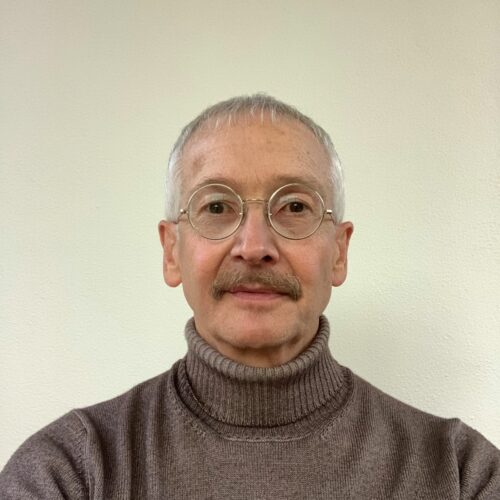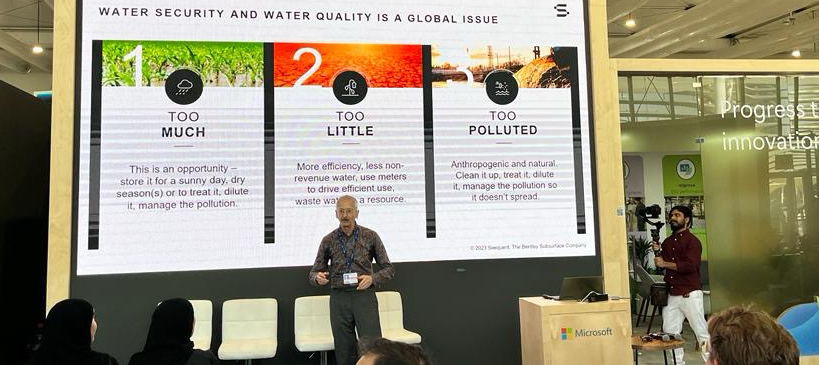Dr. Thomas D. Krom, Seequent Segment Director for the Environment, shares reflections on society’s need for water given global warming, looming supply challenges and an increasing need for transparency.
The 2024 theme for World Water Day ‘Water for Peace’ couldn’t be more relevant.
Peace is not a theme limited to sovereign states. Around the world, there is tension and competition for water, both within and between countries and even among “friends” such as in the EU. We see contention over water in global headlines such as; “Egypt says talks over Grand Ethiopian Renaissance Dam have failed” and, “US State Department says ready to help reach agreement over GERD.” As the Grand Ethiopian Renaissance Dam (GERD) fills up on the Blue Nile River, downstream Sudan is also complaining.

The New York Times wrote about court decisions in the US states of Nevada, Idaho and Montana strengthening restrictions on over-pumping to address a critical decline in groundwater. This will have a significant impact because if an individual can’t pump, it not only impacts his or her business but their suppliers and customers as well as the community around them. At the same time, in May 2023, the US Federal Government intervened in the Southwest due to low water levels and flows in the Colorado River, which was contested by several states. With its estuary located in Mexico, the flow of the Colorado also significantly impacts Mexican communities. How much more complex can this scenario become?
According to the World Economic Forum water scarcity is considered a top long-term risk globally. But life-sustaining water can be a tool for peace when communities and countries cooperate over this precious shared natural resource.
As the UN points out, when we cooperate on water, we create a positive ripple effect – fostering harmony, generating prosperity, and building resilience to shared challenges.
When I reflect on my rural roots, I can recall acrimony over water, and this was in a place abundant with water! Although it was a free resource, anything that could affect its volume and quality was watched with a very careful eye. I can’t remember any conflict among those who cooperated, rather only with those who excluded themselves or kept information quiet.
I believe that these lessons can be applied on a larger scale. Water is a precious resource that should be used to sustain life and promote well-being rather than be a source of conflict. Openness on monitoring and operational data – better known as transparency – and effective stakeholder engagement, is a way to help break down skepticism and mitigate conflict.
A strong common understanding of the resource situation is also necessary. Often, one reason that individuals and organizations (be it a neighbour, or a neighbouring state or country) are not more transparent, is that it can be challenging. And because the response of water systems to stress is not always easy to explain.
Technology can be a great tool to facilitate more openness and improve understanding. Finding clean water for parched communities across Central America, Africa and India and better managing saltwater intrusion in a Spanish seaside town are great examples of how our subsurface software can support water challenges.
Digital twins (3D models of real-world infrastructure such as a dam or of a natural system like aquifers) can be used to plan new activities, share expectations for future conditions and can also disseminate real-time data. Regulators have found our immersive environments powerful tools for engaging non-technical stakeholders about groundwater pollution risk.
I heard people at COP28 talking about gamifying digital twins as a tool for increasing stakeholder engagement in planning processes. Wouldn’t that be cool? Getting everyone in a virtual future and gaining consensus on the best mutual outcome?
Today’s challenges often require novel solutions, and we understand that transparent communication is crucial for achieving buy-in across multiple stakeholders. Our software users tell us that being able to show their data in visually engaging ways helps create trust and awareness when communicating with the public.
As the effects of climate change continue to escalate, we need to accelerate the access and usability of these kinds of innovative technologies. As they say back home, “Time is a wasting.” The last thing our world needs is yet another source of conflict. It’s crucial to be transparent about data, plans and operations related to water – in fact to be both transparent and inclusive.









